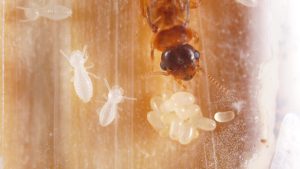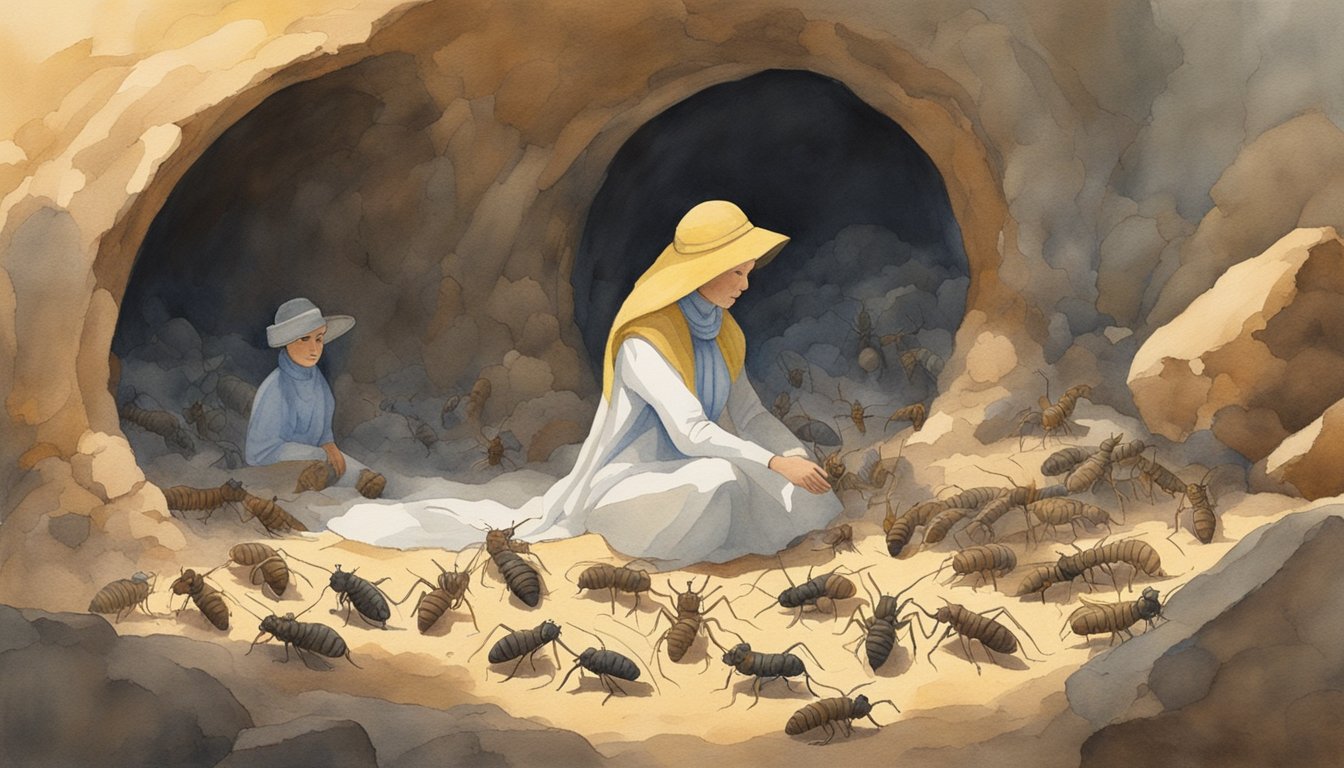The Role of Kings and Queens in Termite Breeding: An In-Depth Analysis
Termite colonies are complex social structures with specialized roles essential for their survival and growth. Among these roles, the kings and queens play a pivotal part in termite breeding. Understanding their functions and contributions provides insight into the reproductive success and overall health of termite colonies. This article delves into the roles of kings and queens in termite breeding, highlighting their significance in the colony’s lifecycle. The Role of Kings and Queens in Termite Breeding
The Lifecycle of Termite Kings and Queens
Termite kings and queens are central to the colony’s reproductive system. Their lifecycle and roles are critical for the colony’s expansion and survival. Here’s a detailed look at their lifecycle and the stages involved.
Development and Emergence
Termite kings and queens begin their journey as nymphs within their parent colony. During their development, they undergo several molts and maturation stages. The process of becoming a king or queen is highly selective and depends on various factors such as environmental conditions and the colony’s needs.
As nymphs mature, they transition into alates, the winged reproductive termites. This transition is marked by significant physiological changes that prepare them for their role in establishing new colonies. The alates leave their parent colony during a nuptial flight, a critical phase where they find mates and establish new colonies.

Nuptial Flight and Mating
During the nuptial flight, alates swarm in large groups to maximize their chances of finding a mate. The nuptial flight typically occurs during warm, humid conditions, which are ideal for their dispersal and mating.
Once a suitable mate is found, the alates land and shed their wings. The male and female then seek out a suitable location for their new colony. This process involves extensive searching and selection of a nesting site that will support the growth of their colony.
Colony Establishment and Role Assignment
After mating, the newly paired king and queen establish a new colony. The queen begins laying eggs, while the king supports her by helping to care for the eggs and protect the new colony. The initial stages of colony establishment are critical as the couple works together to ensure the survival and growth of their offspring. https://gekapestmanagement.com.au/termite-treatment-tweed-heads/
As the colony grows, the roles of kings and queens become more defined. The queen continues to lay eggs, while the king takes on responsibilities such as defending the colony and managing internal activities. Their coordinated efforts are crucial for the colony’s long-term success.
Functions and Responsibilities of the Queen
The queen termite is the primary reproductive individual in the colony. Her role and responsibilities are central to the colony’s reproductive success. Here’s a closer look at her functions.
Egg Production
The primary function of the queen is to produce eggs. A healthy queen can lay thousands of eggs per day, depending on the colony’s size and needs. Her prolific egg-laying ensures a continuous supply of nymphs, which are essential for maintaining and expanding the colony.
The queen’s ability to produce eggs is influenced by various factors, including her age, health, and the colony’s environmental conditions. A well-maintained queen can significantly contribute to the colony’s growth and stability.
Colony Management
In addition to egg production, the queen plays a crucial role in colony management. She releases pheromones that regulate the colony’s activities and influence the development of other termites. These chemical signals help coordinate the efforts of worker and soldier termites, ensuring a well-organized and efficient colony.
The queen’s presence and pheromones also help maintain social structure within the colony. By controlling the reproductive capabilities of other termites, she ensures that only a few individuals take on reproductive roles, which helps maintain order and balance within the colony.
Health and Longevity
The health and longevity of the queen are vital for the colony’s success. A healthy queen can live for several years, during which she continuously produces eggs and supports the colony’s growth. Her longevity ensures a stable and consistent reproductive output, which is essential for the colony’s survival and expansion.
Factors such as disease, environmental conditions, and nutritional availability can impact the queen’s health and lifespan. Ensuring a healthy environment and providing adequate resources are crucial for maintaining a productive queen.
Functions and Responsibilities of the King
The king termite, while not as prominent as the queen, plays an essential role in the colony. His responsibilities complement those of the queen and contribute to the colony’s overall success. Here’s a closer look at his functions.
Support and Protection
The king supports the queen by helping to care for the eggs and protect the colony. He assists in managing the nest and ensuring that the colony remains secure from predators and environmental threats.
The king’s presence helps maintain order within the colony and provides additional support during the initial stages of colony establishment. His efforts in protecting the queen and the colony contribute to the overall stability and growth of the colony.
Coordination with the Queen
The king coordinates with the queen to ensure that the colony’s reproductive and developmental needs are met. He helps regulate the colony’s activities and assists in managing the different castes of termites.
By working closely with the queen, the king ensures that the colony remains organized and efficient. His coordination with the queen helps maintain a balanced and functional colony structure.
Colony Expansion
As the colony grows, the king plays a role in its expansion. He helps manage the development of new castes and supports the overall growth of the colony. His contributions are essential for maintaining a healthy and thriving colony.
The king’s involvement in colony expansion includes overseeing the development of new nymphs and ensuring that the colony’s resources are effectively utilized. His efforts help sustain the colony’s growth and stability over time.
Conclusion
The roles of kings and queens in termite breeding are vital for the success and survival of termite colonies. From their development and emergence to their functions in egg production, colony management, and expansion, these reproductive individuals play essential roles in ensuring the colony’s growth and stability. Understanding their responsibilities and contributions provides valuable insights into the complex dynamics of termite colonies and helps in managing termite populations effectively.


